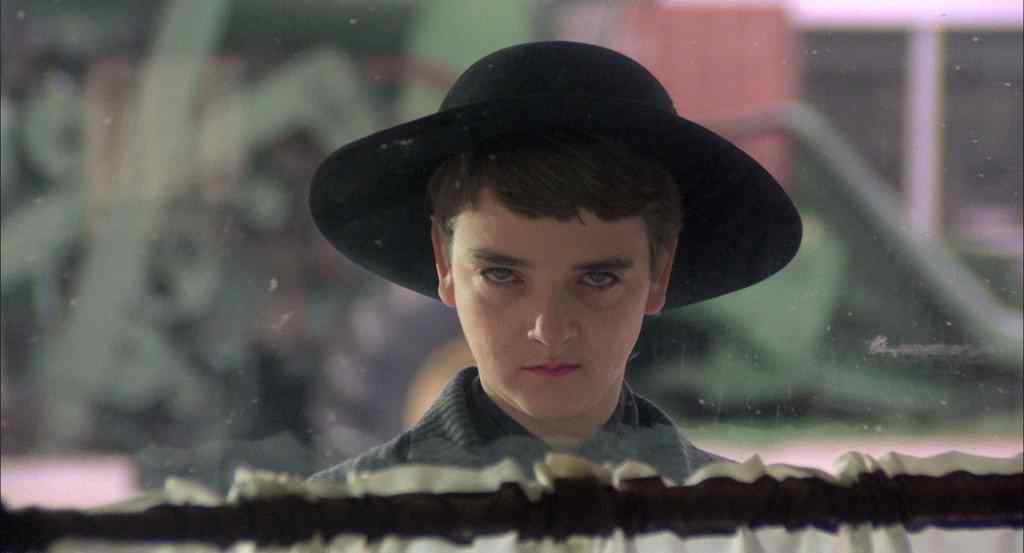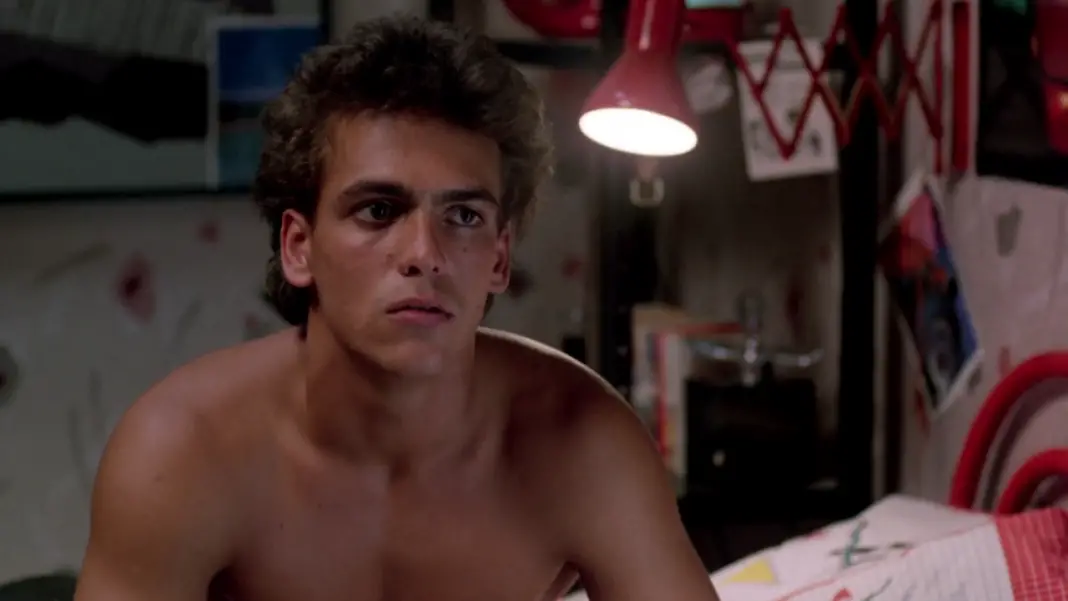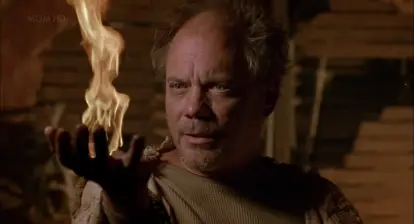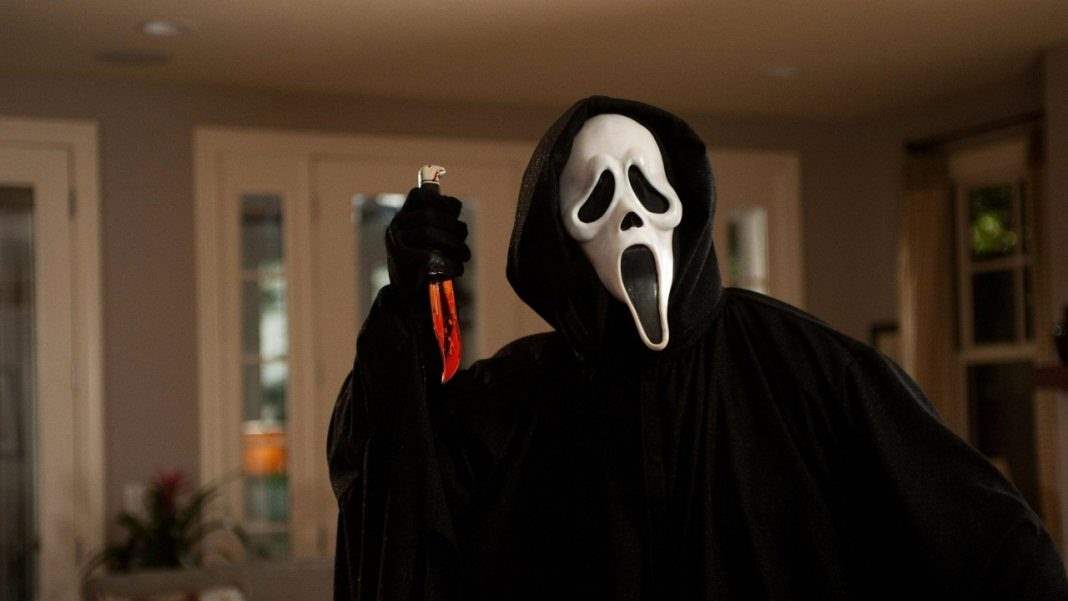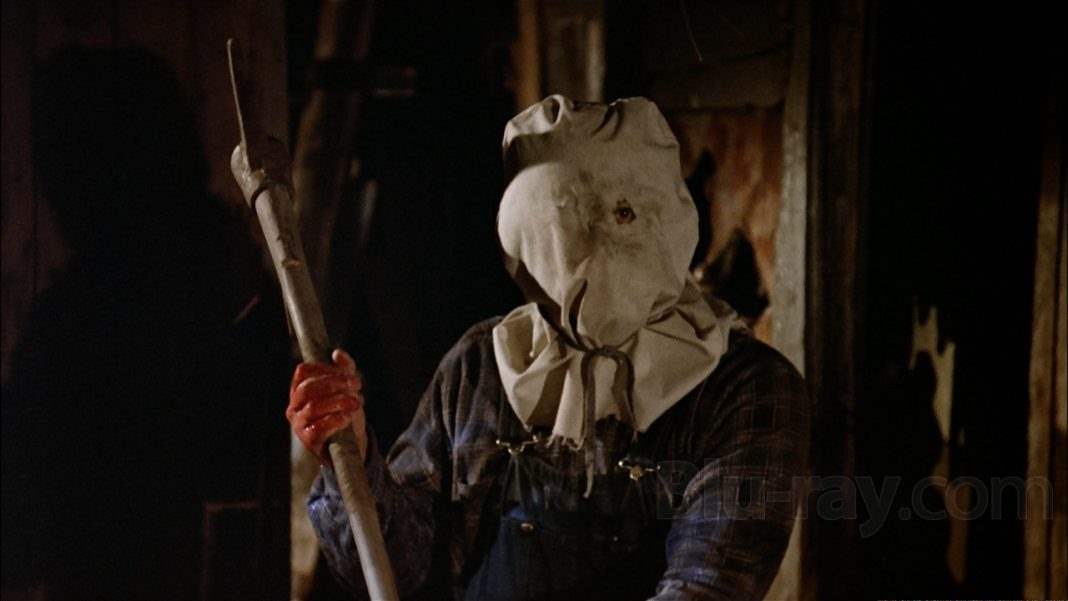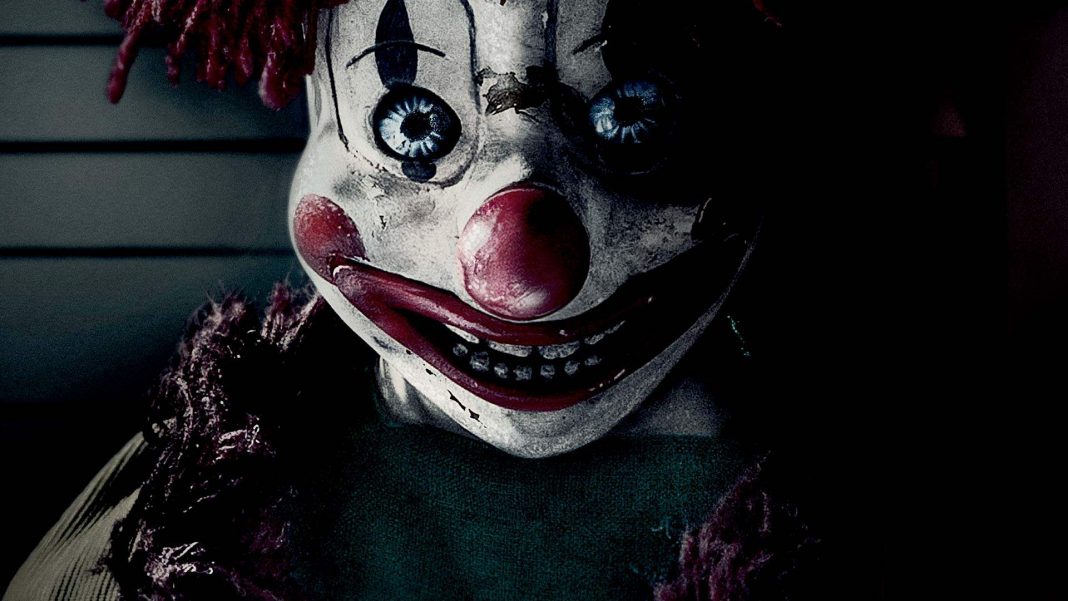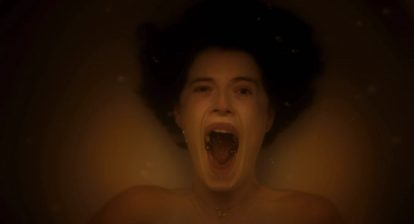Based on the Stephen King short story, Children of the Corn actually takes numerous liberties with the source material. But in many ways, King’s incredibly dark story simply couldn’t be brought to the screen at the time. It works in the confines of the story’s thirty pages. It’s easy to live with unlikeable characters for that amount of time, and Burt and Vickie definitely are that in the short story. They hate each other. They loathe each other. Hell, they outright despise each other and for thirty pages that’s a really interesting dynamic. For the length of a film, however, you need leads that you can connect and identify with. If anything, this was proven by the 2009 remake that attempted to stick much closer to the source material, but failed to capture an audience.
So instead, this 1984 adaptation of Children of the Corn sees Peter Barton and Linda Hamilton as a relatively happy couple driving across Nebraska, driving through endless rows of corn on either side of their lonely stretch of highway. Near the town of Gatlin, they hit a child with their car and discover that his throat had been slashed before he even set foot into the road. This one moment sets them forth on a nightmare, especially when they try to go for help and the old man at the gas station simply tells them not to go to Gatlin, whatever their trouble is. “Folks in Gatlin got religion,” he says.
And they don’t know the half of it. Of course, the audience is well aware how much religion they’ve got in Gatlin because—by this point—they’d already been treated to the fabulous opening scene depicting the day a new order was established: when the children of Gatlin murdered the adults. The scene is a shocking, stunning cold open. Even young Jobe’s hammy narration can’t bring it down. The scene is remembered now for its gore factor, but it is actually relatively bloodless.
Still, Burt and Vickie find themselves in the middle of a nightmare when they realize that someone out there in the corn has just murdered a child and may still be watching them. The killer in question is Malachai, right hand man of a boy preacher named Isaac. Isaac speaks the will of the “God” that these children worship, an entity they identify as “He Who Walks Behind the Rows.”
He speaks, and Malachai enforces what he speaks. After thirty years, these two have proven to be the iconic images of the movie and all-in-all the best things about it. This praise is well-deserved as both John Franklin and Courtney Gains give amazing performances as Isaac and Malachai, respectively.
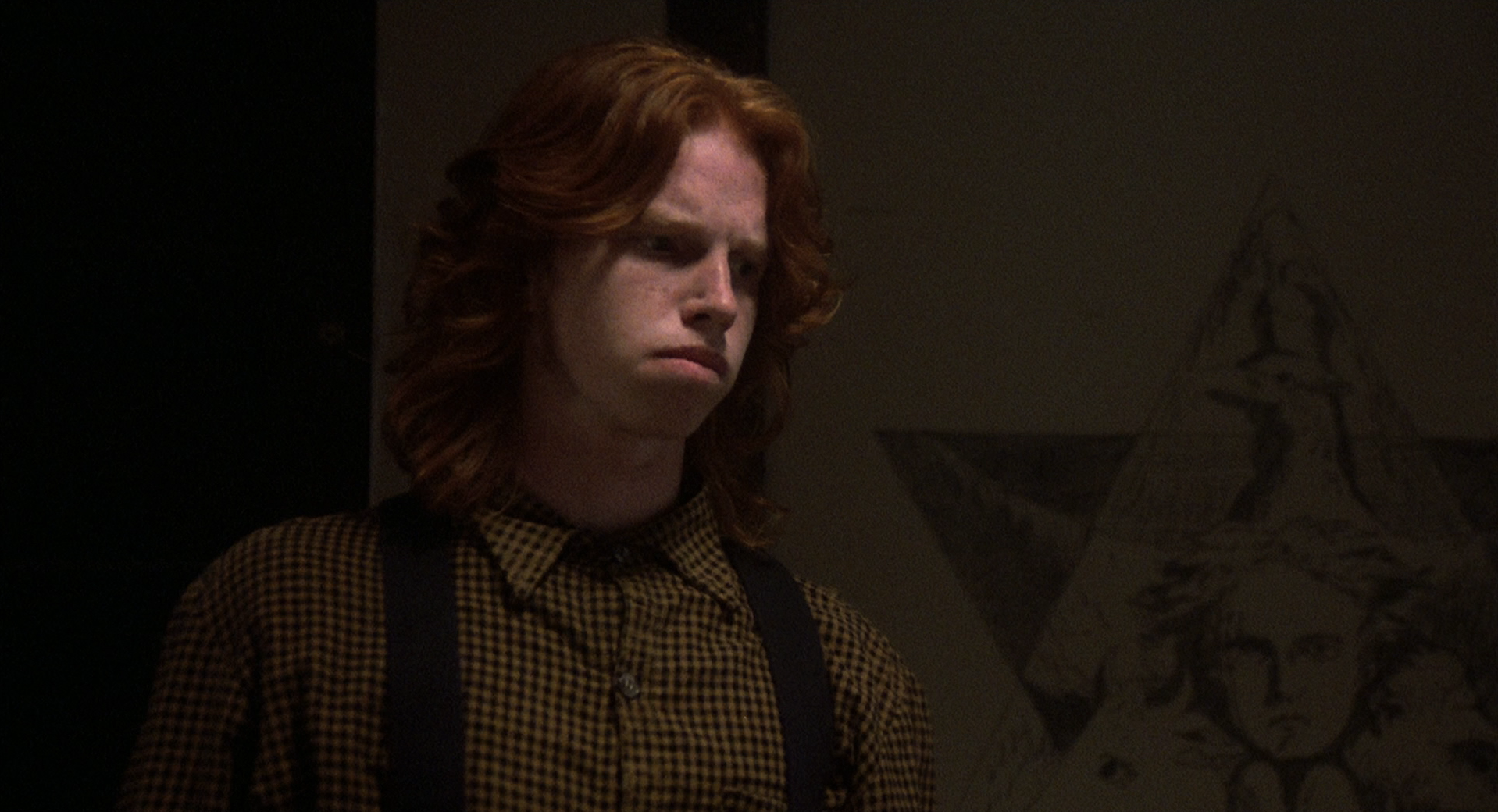
Malachai is who the other children are really afraid of, though. He is terrifying in more direct ways than Isaac. He does most of the killing in the movie, and in no way does he draw you in. He is a cold, psychotic presence and his aggression shows before he even opens his mouth to speak. Malachai is cold and cruel and monstrous. Even though actor Courtney Gains is of average height, almost every one of his scenes is shot from below so that he appears to tower over the rest of the cast. One of the best moments comes when one of the children, Rachel, encounters the “interloper” Burt and wants to alert the others of his presence. She tells them to get Isaac, then pauses and says “No, get Malachai” and the children all gasp in horror because he is the one they’re truly afraid of.
 The power struggle between Isaac and Malachai is one of the strongest points of the film. Obviously, characters like Isaac and Malachai both lead through fear. But when Malachai is the one that the other children are truly afraid of, Isaac’s place is questioned entirely and Malachai realizes that he is in the perfect position to take that power for himself. Because he doesn’t need t be eloquent. He doesn’t need to draw people in. The other children will listen to him because they are terrified of him, and Malachai is extremely aware of this. The movie showcases these two very real, very common ways of getting people to do what you say and fall in line, and examines how they play against each other in a fairly interesting way.
The power struggle between Isaac and Malachai is one of the strongest points of the film. Obviously, characters like Isaac and Malachai both lead through fear. But when Malachai is the one that the other children are truly afraid of, Isaac’s place is questioned entirely and Malachai realizes that he is in the perfect position to take that power for himself. Because he doesn’t need t be eloquent. He doesn’t need to draw people in. The other children will listen to him because they are terrified of him, and Malachai is extremely aware of this. The movie showcases these two very real, very common ways of getting people to do what you say and fall in line, and examines how they play against each other in a fairly interesting way.
For the bulk of the movie, before He Who Walks Behind the Rows is revealed to be a real entity, most of the horror comes from the old world religion adopted by the children. Gatlin is an extremely old testament town. These children are not allowed any forms of entertainment, no stories other than the good book (which has been rewritten substantially by Isaac to serve He Who Walks Behind the Rows and not the false God). The mythology built up around these children and the way they serve their faith is chilling. They sacrifice all adults, they sacrifice all outsiders, they sacrifice all who do not do what they are told or somehow go against His will, and on their nineteenth birthday they sacrifice themselves. As Malachai says, He Who Walks Behind the Rows is the “God of Blood and Sacrifice.”
 The movie’s only major weak point–aside from a few moments of awkward humor–comes through He Who Walks Behind the Rows, which is revealed to be an actual, physical force by the end of the film and simply something left ambiguous or something Isaac made up that they all believed. Both would have been interesting. And at first this is too. Isaac’s return after Malachai sentences him to the corn is great. The boy preacher returns from death with white hair and bloodshot eyes to sneer “He wants you to, Malachai.” And that’s enough to let us know He Who Walks Behind the Rows is some kind of supernatural entity. It may be the Devil, it may be something else. The less we know, the better. But that’s not the way it pans out.
The movie’s only major weak point–aside from a few moments of awkward humor–comes through He Who Walks Behind the Rows, which is revealed to be an actual, physical force by the end of the film and simply something left ambiguous or something Isaac made up that they all believed. Both would have been interesting. And at first this is too. Isaac’s return after Malachai sentences him to the corn is great. The boy preacher returns from death with white hair and bloodshot eyes to sneer “He wants you to, Malachai.” And that’s enough to let us know He Who Walks Behind the Rows is some kind of supernatural entity. It may be the Devil, it may be something else. The less we know, the better. But that’s not the way it pans out.
Instead, in a Tremors-like sequence, He Who Walks Behind the Rows chases after our heroes by burrowing under the corn as they try to burn down the field. When they succeed, we get a glimpse at the monster that was cheesy in 1984 and is only cheesier now. There’s a big cartoon fire, and in that cartoon fire an even cartoonier demonic grin.
Still, that does little to bring down the quality of the film itself. While King himself sued the producers at the time and was not happy with the movie, much of that was due to his treatment writing the first draft screenplay which was ultimately rejected. It is nonetheless remembered as a cult classic, a reputation it has no doubt deserved. It’s not a revolutionary King adaptation like The Shining or The Green Mile, but it’s no Lawnmower Man either. It has spawned a franchise unlike any other King story. In fact, while several Stephen King adaptations have had their sequels, none have come close to Children of the Corn with nine films to date. It’s a simple story that is supremely effective and manages to be as creepy now as it was when it was first released.
